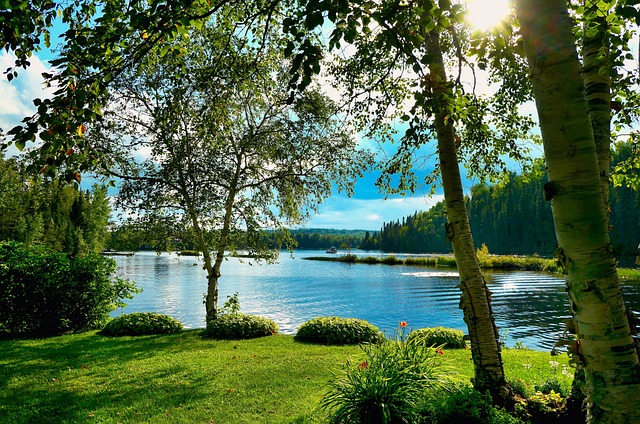
The United Nations Convention on Biological Diversity (CBD) will meet in Montreal in a few weeks to adopt new objectives for the conservation, restoration and management of biodiversity. These three frameworks will influence sustainable development for the rest of the decade along with the global commitment to the UN Sustainable Development Goals and the Paris Agreement on climate change.
The objectives of protecting ecosystems and biodiversity have been criticized for not taking into account the needs of the people who are most directly dependent on them, for example indigenous communities and other local communities. Therefore, identifying the contributions that nature brings to people directly is essential to ensure equitable and fair nature conservation decision-making.
A new study carried out by an international scientific team in which, among others, researchers from the Basque Center for Climate Change (BC3), Ikerbasque and the Natural Capital Project at the University of Minnesota have participated, demonstrates how nature conservation contributes to well-being on a local and global scale, and maps those ecosystems that are essential for local communities and that also contribute to the well-being of society at a global level.
Published in Nature Ecology & Evolution, this work shows that conserving 30% of the planet's surface and 24% of coastal waters could maintain 90% of the contributions that nature currently offers to people in all countries. These vital benefits provided by nature have enormous cultural and economic value as they are associated with the provision of food, clean water, physical and mental well-being, as well as many other invaluable cultural benefits.
Prioritizing conservation, protection and restoration efforts in areas identified as “critical natural assets” could maintain a high proportion of the natural benefits that people obtain directly. “Everyone on the planet benefits from nature,” says Becky Chaplin-Kramer, lead author of the study at the University of Minnesota. “What is striking is the number of people who benefit from a relatively modest proportion of all the world's land area. If we could keep these areas in their current state through conservation mechanisms, we would be able to ensure that these benefits for people, both locally and globally, continue for years to come.”
These valuable ecosystems are found in all corners of the planet. Some, like the forests of the Congo Basin, are recognized sources of environmental value. Others, on the other hand, may go more unnoticed, but each one is vital to the respective communities it serves. It should be noted that in all countries there are also areas that are globally essential for climate mitigation and biodiversity, such as the Amazon, but that cannot provide all their benefits locally and therefore require greater attention to the conservation of nearby areas, such as the Paraná River, which connects the numerous population centers in central South America. Similarly, the headwaters of the Yangtze and Mekong rivers emerge as areas of key importance to many people in Asia.
Measuring and mapping areas that provide significant benefits to people would provide the information needed for policy makers to better consider impacts on local communities when choosing conservation policies and investments. Unai Pascual, Ikerbasque Professor at BC3, co-chair of the recent Assessment Report on Diverse Values and Valuation of Nature of the Intergovernmental Platform on Biodiversity and Ecosystem Services (IPBES) and co-author of this study, states that "this research helps answer a crucial question: where should we focus our nature conservation efforts with a global vision? The study identifies critical land and coastal areas that could be prioritized for conservation, while ensuring that the benefits of nature, such as clean water supply, food security or protection against storms, continue to flow to local communities, as well as to humanity as a whole, for example through climate regulation."
The study offers the most comprehensive view of nature's contributions to people that has been mapped globally to date. Furthermore, the developed approach can be used at various scales of decision-making and complemented by input from local experts and stakeholders. "Global maps can offer a global view and reveal large-scale patterns, but they require local context for decision-making. It's like a map app on your phone first giving you an overview of your route, but if you want to to see what it will be like once you arrive at your destination, you will switch to a street-level view – you need both to really know where you are going," explains Chaplin-Kramer.
Pascual adds that "the study can help conservation efforts address the multiple values of nature, including the intrinsic values of species and ecosystems, while acknowledging the multiple ways in which people benefit from nature. We hope that these types of studies help to bridge the gap between the different values of nature that are considered by practitioners and policy makers interested in optimizing conservation and development efforts around the world."
Among the collaborators and partners of this study are: BC3, Ikerbasque, Carleton University, Colorado State University, the Multidisciplinary Institute of Plant Biology of the National Council for Scientific and Technical Research (IMBIV-CONICET), Conservation International, Cornell University, King's College London, Nature Conservancy of Canada, Pennsylvania State University, SPRING, Stanford University Natural Capital Project, SYSTEMIQ, Nature Conservancy, UNEP-WCMC, National University of Córdoba (Argentina) , the University of Bern, the University of Minnesota College of Food Sciences, Agriculture and Natural Resources, the University of Siena, the University of Tasmania, Western Washington University, the World Resources Institute and the World Wildlife Fund.
.png)
